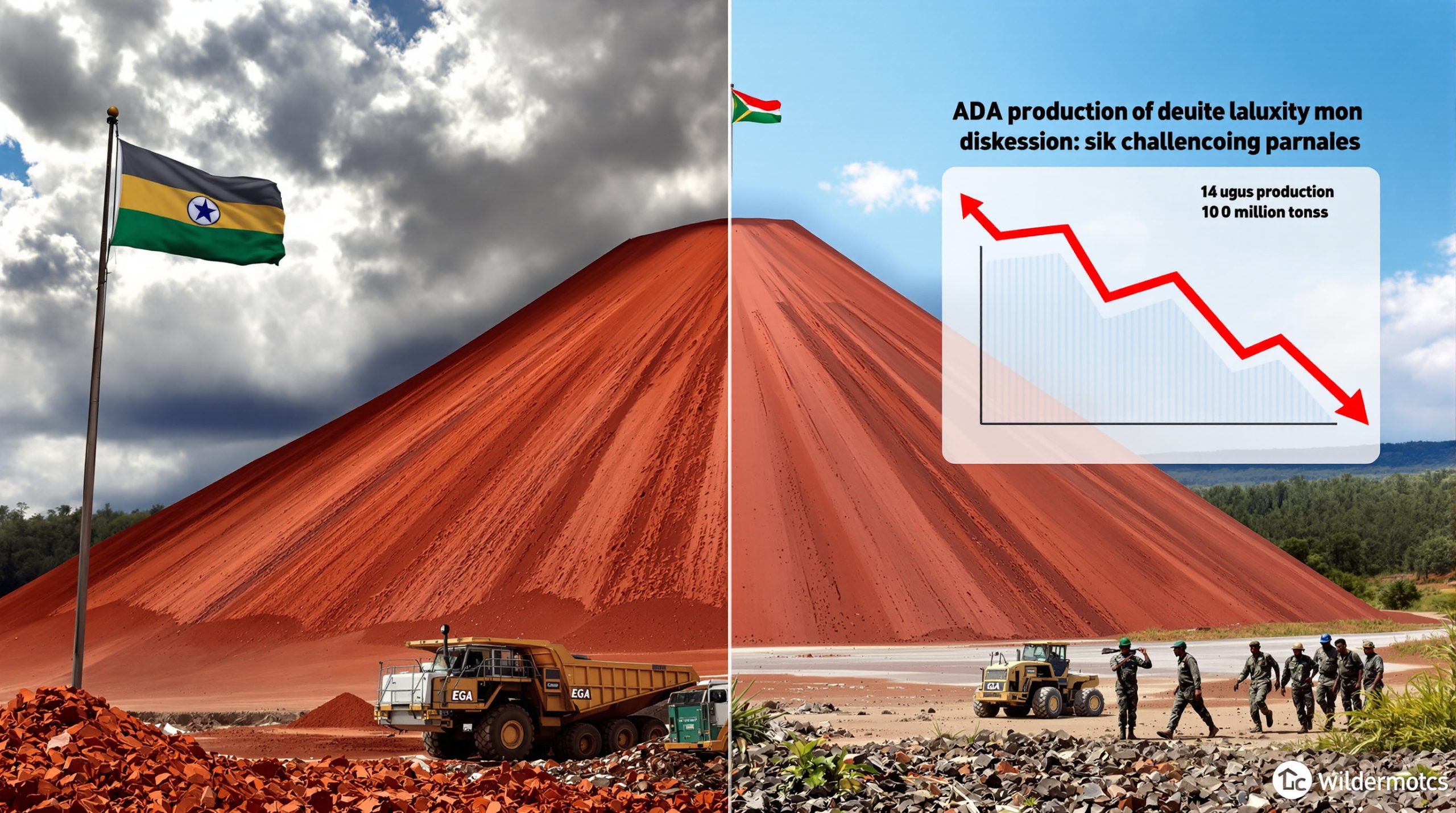Understanding enCore's Strategic Acquisition
The uranium sector continues to witness significant strategic positioning as major players work to secure resources and extend project lifespans. enCore Energy has made a strategic move by acquiring a substantial 5,900-acre land parcel directly adjacent to its existing Alta Mesa uranium project in Texas. This acquisition represents a calculated expansion aimed at enhancing the project's resource base and operational longevity.
William M. Sheriff, enCore Energy's executive chairman, emphasized the importance of this acquisition: "On behalf of the Board, I extend our congratulations to our land department, which worked for many months to assemble this strategic land acquisition that significantly expands the Alta Mesa Uranium Project. The compelling geology and location, immediately adjacent to, and on-trend with, our active and past well fields make this a key acquisition for enCore."
Key Details of the Tacubaya Property Acquisition
The newly acquired Tacubaya property shares several critical characteristics with the main Alta Mesa project:
- Located immediately adjacent to Alta Mesa's well fields and central processing plant
- Encompasses over 5,900 acres of private land with both mineral and surface leases
- Contains uranium mineralization within the Goliad Formation, matching the geological profile of Alta Mesa
- Positioned along projected trends extending from several existing Alta Mesa well fields
What makes this acquisition particularly strategic is the geological continuity between the existing Alta Mesa project and the Tacubaya property. The uranium mineralization at Tacubaya exists in roll fronts within the Goliad Formation—identical to the primary extraction zones at Alta Mesa. This geological similarity significantly reduces exploration risk and increases the probability of successful resource development.
Alta Mesa Project Overview and Joint Venture Structure
The Alta Mesa uranium project operates under a joint venture arrangement with clearly defined ownership stakes:
- enCore Energy: 70% controlling interest
- Boss Energy: 30% participating interest
This partnership structure allows for shared investment and risk while maintaining clear operational control for enCore as the majority stakeholder. The joint venture model has become increasingly common in the uranium sector as companies seek to distribute capital requirements while maintaining operational efficiency.
Existing Infrastructure and Production Capabilities
The Alta Mesa project features substantial existing infrastructure that provides immediate production potential:
- Fully licensed in-situ recovery (ISR) central processing plant
- Established well field covering more than 200,000 acres of private land
- Annual operating capacity of 1.5 million pounds of uranium
- Additional drying capacity of 500,000 pounds
- Utilizes environmentally responsible ISR technology for extraction
This robust infrastructure gives the Alta Mesa project a significant advantage over greenfield uranium developments, which would require years of permitting and construction before reaching production capability. The central processing plant alone represents a major capital investment that the Tacubaya acquisition can leverage without additional development costs.
What Is In-Situ Recovery Technology?
How Does ISR Uranium Extraction Work?
In-situ recovery represents a modern, less invasive approach to uranium extraction compared to conventional mining methods:
- Uses natural groundwater and oxygen in a closed-loop system
- Eliminates the need for traditional open-pit or underground mining
- Reduces surface disturbance and environmental impact
- Allows for more selective extraction of uranium deposits
- Provides cost advantages over conventional mining in appropriate geological settings
The ISR process begins by drilling injection wells into uranium-bearing sandstone formations. A solution of oxygenated water (sometimes with added mild carbonate compounds) is injected into these wells. This solution dissolves the uranium from the sandstone as it passes through the formation. Recovery wells then pump the uranium-rich solution to the surface, where it's processed at the central plant to extract the uranium.
Unlike conventional mining, ISR leaves the rock formation in place, significantly reducing surface disturbance and eliminating the creation of waste rock piles and tailings facilities. This approach is particularly effective in permeable sandstone formations like those found at Alta Mesa.
Current Operations at Alta Mesa
The project is currently in an active development phase with several ongoing operational elements:
- Maintaining oxygenated water circulation within the well field
- Direct feed into the primary pipelines of the Alta Mesa central processing plant
- Ongoing expansion of the well field infrastructure
- Projected steady increase in extraction rates through 2025 and beyond
The current operations focus on optimizing well field performance while preparing for expansion into additional resource areas. The circulation of oxygenated water through the uranium-bearing formations dissolves the uranium minerals, creating a uranium-rich solution that's processed at the central plant. This continuous operation allows for steady production while new well fields are being developed.
What Are the Exploration Plans for the New Property?
Upcoming Drilling Program Details
enCore has outlined an aggressive exploration strategy to fully evaluate the uranium potential of the Tacubaya property:
- Comprehensive 200-hole drilling program strategies scheduled to commence in October 2025
- Initial deployment of two drilling rigs
- Plans to add two additional rigs as exploration advances
- Focus on delineating uranium mineralization identified in historical exploration
- Following up on mineralization originally discovered by Chevron in the late 1970s
"We will begin an aggressive exploration programme, following up on mineralisation discovered by Chevron in the late 1970s, which lies along projected trends extending from several of the well fields at Alta Mesa," stated Sheriff, highlighting the company's confidence in the property's potential.
The planned drilling program represents a significant investment in defining the resource potential of the Tacubaya property. With 200 planned drill holes, enCore aims to systematically map the extent, grade, and continuity of uranium mineralization throughout the property. The initial deployment of two drilling rigs, with plans to add two more, indicates the company's commitment to rapidly advancing exploration.
Strategic Significance of the Acquisition
The acquisition holds particular value due to several factors that enhance its potential contribution to the overall Alta Mesa project:
- Immediate proximity to existing infrastructure reduces development costs
- On-trend location with active and past well fields suggests geological continuity
- Potential to provide additional feed material to the central processing plant
- Opportunity to extend the operational lifespan of the overall Alta Mesa project
- Leverages existing permits and infrastructure for more efficient development
The strategic value of the Tacubaya acquisition extends beyond simple resource addition. By acquiring property immediately adjacent to existing operations, enCore can potentially extend the life of current well fields along trend lines and integrate new production areas with minimal additional infrastructure investment. This approach maximizes the return on capital already invested in the central processing plant and associated facilities.
How Does This Fit Into enCore's Broader Development Strategy?
Recent Regulatory Approvals
The Tacubaya acquisition follows other recent regulatory milestones for enCore Energy:
- In May 2025, enCore received approval for the Upper Spring Creek ISR uranium project
- The Texas Commission on Environmental Quality granted permission under the existing radioactive materials license
- This approval allows enCore to manage radioactive materials including uranium within the Upper Spring Creek project's Brown Area
These regulatory approvals demonstrate enCore's ability to navigate the permitting process effectively, a critical skill in the highly regulated uranium sector. The approval for the Upper Spring Creek project under the existing radioactive materials license illustrates the company's strategy of leveraging current permits to streamline development of new resource areas.
Market Positioning in the U.S. Uranium Sector
This acquisition reflects enCore's strategic approach to uranium project development in the United States:
- Focus on consolidating assets in established uranium districts
- Emphasis on projects with existing infrastructure to accelerate time-to-production
- Targeting properties with historical exploration data to reduce discovery risk
- Building a portfolio of assets that can be developed sequentially or in parallel
- Positioning to respond to potential increases in uranium demand
By focusing on established uranium districts with existing infrastructure, enCore is pursuing a lower-risk development strategy compared to companies exploring greenfield uranium prospects. The acquisition of properties with historical exploration data, such as the Chevron work at Tacubaya, allows for more targeted and efficient exploration programs.
What Makes Texas an Attractive Region for Uranium Development?
Geological Advantages
Texas offers several geological characteristics that make it particularly suitable for ISR uranium extraction:
- Presence of roll-front uranium deposits in permeable sandstone formations
- Favorable groundwater chemistry for in-situ recovery processes
- Multiple uranium-bearing formations including the Goliad Formation
- Relatively shallow depth of deposits reducing drilling and well completion costs
- Established uranium districts with proven production history
The Goliad Formation, which hosts uranium mineralization at both Alta Mesa and the Tacubaya property, is a particularly favorable host for ISR extraction. This formation typically features good permeability, allowing for efficient solution flow through the mineralized zones. The roll-front deposits found in this formation are formed by groundwater movement, creating zones of concentrated uranium mineralization along oxidation-reduction boundaries.
Regulatory Environment
The state provides a structured regulatory framework for uranium development:
- Well-established permitting processes for ISR operations
- Experienced regulatory agencies familiar with uranium extraction
- Streamlined approach for expanding existing operations
- Ability to operate under existing licenses for adjacent properties
- History of responsible uranium production dating back several decades
Texas has a long history of uranium production, with the first commercial uranium mining dating back to the late 1950s. This history has resulted in a regulatory framework specifically designed for uranium extraction activities, with agencies experienced in overseeing ISR operations. This regulatory familiarity can significantly reduce permitting timelines compared to states without established uranium industries.
What Are the Implications for Future Production?
Production Timeline Expectations
The integration of the Tacubaya property into the Alta Mesa project is expected to influence production in several ways:
- Near-term focus on exploration and resource definition
- Medium-term development of additional well fields
- Potential to maintain or increase production rates beyond current projections
- Extension of the overall project lifespan through additional resource development
- Opportunity to optimize production scheduling based on uranium market volatility
The exploration program scheduled to begin in October 2025 represents the first phase of development for the Tacubaya property. Assuming successful delineation of economic uranium resources, well field development could potentially follow within 12-24 months, depending on permitting requirements and resource characteristics. This timeline would align with the broader development strategy for the Alta Mesa project.
Disclaimer: The production timeline projections are based on typical industry development timeframes and company statements. Actual development schedules may vary based on exploration results, permitting processes, market conditions, and other factors beyond the control of the company.
Market Impact Considerations
This expansion occurs against the backdrop of evolving uranium market dynamics:
- Growing interest in domestic uranium production in the United States
- Increasing focus on secure supply chains for critical minerals
- Renewed attention to nuclear energy as a low-carbon power source
- Potential for price support through strategic uranium reserve initiatives
- Competitive positioning against international uranium producers
The United States has historically been heavily dependent on imported uranium, with domestic production accounting for less than 5% of U.S. reactor requirements in recent years. This situation has led to increasing concerns about supply security, particularly as nuclear power gains recognition for its role in low-carbon energy production. Furthermore, the recent US uranium disruption and US Senate uranium ban have created additional market pressures that companies like enCore are positioning to address. The Paladin uranium halt in Namibia has also contributed to global supply concerns, further emphasizing the importance of domestic production capabilities.
FAQ: Key Questions About the Alta Mesa Expansion
How does the acquisition impact enCore's production capacity?
While immediate production capacity remains unchanged at 1.5 million pounds annually, the acquisition provides potential for extending the production timeline and possibly increasing future capacity through additional resource development. The central processing plant's existing capacity can accommodate additional feed material from new well fields developed at Tacubaya, potentially allowing for optimization of production rates over a longer period.
What is the significance of the historical Chevron exploration?
Chevron's exploration in the late 1970s identified uranium mineralization in the area, providing valuable historical data that reduces exploration risk and helps guide enCore's upcoming drilling program. During this period, Chevron was actively exploring for uranium throughout the southwestern United States, applying sophisticated exploration techniques for the time. This historical data provides enCore with target areas for follow-up exploration, potentially accelerating the resource definition process.
How does ISR uranium extraction compare environmentally to conventional mining?
ISR extraction typically has a smaller surface footprint, eliminates waste rock and tailings production, and allows for progressive site restoration, generally resulting in lower environmental impact compared to conventional open-pit or underground uranium mining. The process uses a fraction of the water required by conventional mining and milling operations, and disturbs only about 10-15% of the surface area compared to conventional mining for equivalent production.
Environmental Note: While ISR mining generally has lower environmental impacts than conventional mining, proper groundwater monitoring and restoration are essential components of responsible ISR operations. Regulatory requirements typically include extensive groundwater monitoring before, during, and after production.
What factors will determine the success of the exploration program?
Key success factors include the continuity and grade of uranium mineralization, hydrogeological conditions affecting recovery efficiency, proximity to existing infrastructure, and the ability to efficiently integrate new resources into the current production plan. The permeability of the host sandstone is particularly important for ISR operations, as it directly affects the flow of solution through the mineralized zones and, consequently, the uranium recovery efficiency.
How might this acquisition affect enCore's market position?
The acquisition strengthens enCore's position as a significant U.S. uranium producer by expanding its resource base, potentially extending production timelines, and demonstrating the company's ability to execute on its growth strategy through strategic acquisitions. By focusing on expanding existing operations rather than developing greenfield projects, enCore can potentially achieve production growth with lower capital intensity and shorter development timelines.
Further Exploration:
Readers interested in learning more about uranium mining developments in the United States can also explore related educational content, such as Mining Technology's article "enCore acquires land parcel adjacent to Alta Mesa uranium project".
Interested in Spotting the Next Major Mineral Discovery?
Gain a competitive edge in the market with Discovery Alert's proprietary Discovery IQ model, which provides real-time notifications of significant ASX mineral discoveries and transforms complex data into actionable investment insights. Visit the Discovery Alert discoveries page to see how historic mineral discoveries have generated substantial returns for early investors.




